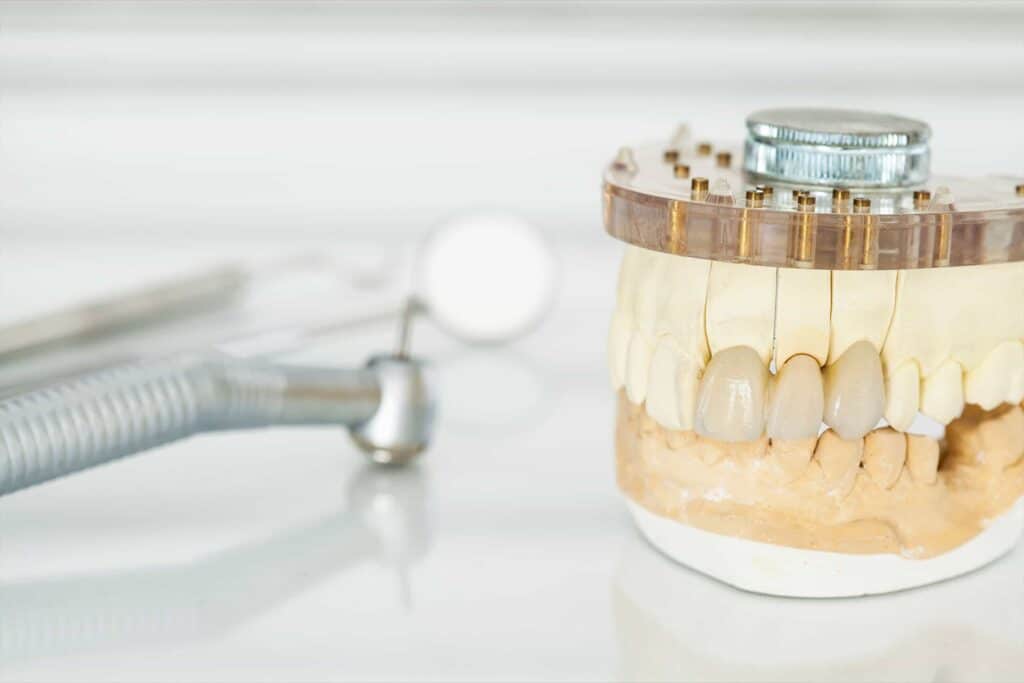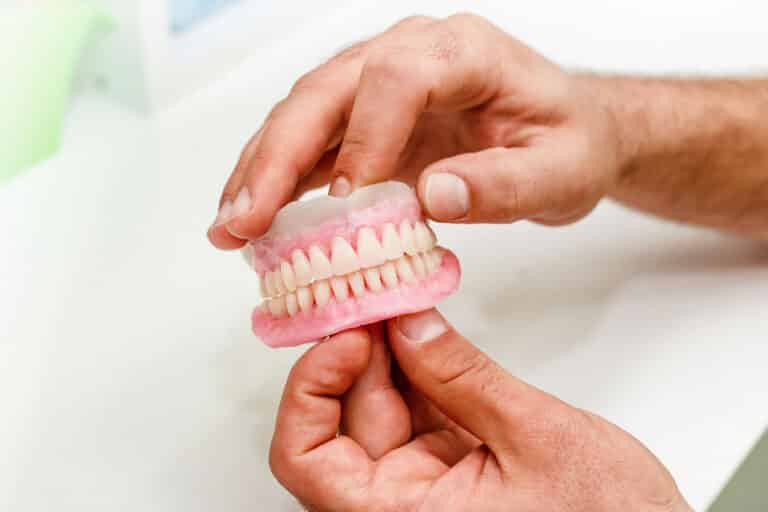How Does Teeth Whitening Work?
Teeth appear dark or discolored due to intrinsic or extrinsic stains or, said differently, from staining inside or outside the tooth. Stains on the outside are removed by a professional clean and polish. A bleaching process typically removes stains from within the tooth. The bleaching process requires the placement of a gel that typically contains carbamide peroxide, which breaks down to hydrogen peroxide. The gel penetrates the tooth structure and breaks up the accumulated staining.
The procedure’s effectiveness is determined by the length of time the gel has to sit on the tooth. To balance the efficacy and comfort, either the concentration needs to be higher to allow for a lower time on the tooth or a lower concentration with a higher time on the tooth. Thus the method of placement becomes important, and custom trays excel at keeping the gel only on the teeth. When the gel is a higher concentration or spills onto the gums, it can cause discomfort and sensitivity. Take care of which whitening system you choose.
Is Whitening Bad for My Teeth?
This is an area that, while we are not 100% sure of, there doesn’t appear to be significant adverse effects. There are risks involved with bleaching vital teeth, including sensitivity, gingival irritation, a possible weakening of the enamel, dentin, and bond strength of restorations. However, there is a significant amount of conflicting information and some non-standardization among the studies involved. Overall, many dentists can agree that the well-known risks are minimal compared to the benefits that bleaching can provide. While there are no mechanical or physical improvements, the boost to mental health from improvements in esthetics can significantly impact one’s quality of life.
Why Do I Get So Many Cavities?
There are several reasons why and often, the actual cause is multifactorial. However, the primary reasons that are in one’s control can be boiled down to the quality and frequency of dental hygiene and the quality and frequency of eating and drinking. The mouth is full of bacteria that feed on our food. When not appropriately maintained, the bacteria multiply and produce an acid byproduct which leads to cavities. Additionally, when the foods eaten are easily processed by the bacteria, such as processed sugar and carbohydrates, such as chips, it is much easier for the bacteria to multiply and create acid. Lastly, if one consumes said processed foods frequently, the more often the bacteria can create the cavity creating acids. Other factors include genetic factors, age, and recession. While some of these factors are in your control, you cannot control your genes.
Why Are My Teeth Breaking and Chipping?
This is another dental problem where many factors come into play. Some of those factors include the bite, presence of clenching or grinding, age, and structural integrity of the teeth. As a general rule of thumb, older teeth have undergone many more chewing cycles. They are more susceptible to chipping and breaking. Furthermore, if there is malocclusion with more stress on some teeth and if that person clenches and grinds, it places more stress on the teeth. Lastly, if there are a lot of fillings already on the teeth, it will be more prone to breaking. Many of these factors can be mitigated with interventions such as a night time appliance, crowns, and orthodontics to straighten the teeth.





